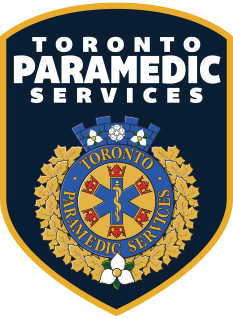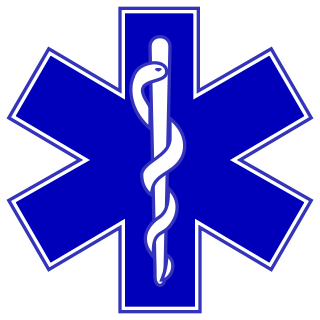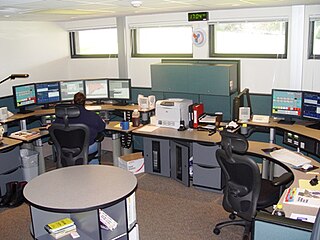An automated call distribution system, commonly known as automatic call distributor (ACD), is a telephony device that answers and distributes incoming calls to a specific group of terminals or agents within an organization. ACDs often use a voice menu to direct callers based on the customer's selection, telephone number, selected incoming line to the system or time of day the call was processed. Computer telephony integration (CTI) and computer-supported telecommunications applications (CSTA) are intermediate software that can produce advanced ACD systems. Experts claim that "the invention of ACD technology made the concept of a call centre possible."
Dynamic DNS (DDNS) is a method of automatically updating a name server in the Domain Name System (DNS), often in real time, with the active DDNS configuration of its configured hostnames, addresses or other information.
Transaction processing is information processing in computer science that is divided into individual, indivisible operations called transactions. Each transaction must succeed or fail as a complete unit; it can never be only partially complete.
Software development is the process of conceiving, specifying, designing, programming, documenting, testing, and bug fixing involved in creating and maintaining applications, frameworks, or other software components. Software development involves writing and maintaining the source code, but in a broader sense, it includes all processes from the conception of the desired software through to the final manifestation of the software, typically in a planned and structured process. Software development also includes research, new development, prototyping, modification, reuse, re-engineering, maintenance, or any other activities that result in software products.

Computer-aided dispatch (CAD), also called computer-assisted dispatch, is a method of dispatching taxicabs, couriers, field service technicians, mass transit vehicles or emergency services assisted by computer. It can either be used to send messages to the dispatchee via a mobile data terminal (MDT) and/or used to store and retrieve data. A dispatcher may announce the call details to field units over a two-way radio. Some systems communicate using a two-way radio system's selective calling features. CAD systems may send text messages with call-for-service details to alphanumeric pagers or wireless telephony text services like SMS. The central idea is that persons in a dispatch center are able to easily view and understand the status of all units being dispatched. CAD provides displays and tools so that the dispatcher has an opportunity to handle calls-for-service as efficiently as possible.

A dispatcher is a communications worker who receives and transmits information to coordinate operations of other personnel and vehicles carrying out a service. A number of organizations, including police and fire departments, emergency medical services, motorcycle couriers, taxicab providers, trucking companies, railroads, and public utility companies, use dispatchers to relay information, direct personnel, and coordinate their operations.
A warehouse management system (WMS) is a software application designed to support and optimize warehouse functionality and distribution center management. These systems facilitate management in using simplified automatic technologies useful in daily activities like planning, organizing, staffing, directing, warehousekeeping and controlling the utilization of available resources, to move and store materials inside, around and outside of a warehouse, while supporting staff in the performance of material movement and storage in and around a warehouse, without causing any large scale disruption to business resources.

A trunked radio system is a two-way radio system that uses a control channel to automatically assign frequency channels to groups of user radios. In a traditional half-duplex land mobile radio system a group of users with mobile and portable two-way radios communicate over a single shared radio channel, with one user at a time talking. These systems typically have access to multiple channels, up to 40-60, so multiple groups in the same area can communicate simultaneously. In a conventional (non-trunked) system, channel selection is done manually; before use the group must decide which channel to use, and manually switch all the radios to that channel. This is an inefficient use of scarce radio channel resources because the user group must have exclusive use of their channel regardless of how much or how little they are transmitting. There is also nothing to prevent multiple groups in the same area from choosing the same channel, causing conflicts and 'cross-talk'. A trunked radio system is an advanced alternative in which the channel selection process is done automatically by a central controller (computer).

The City of Toronto Paramedic Services, is the statutory emergency medical services provider in Toronto, Ontario, Canada. The service is operated as a division of the City of Toronto, under the Community & Social Services cluster. The service is funded by the municipal tax base, and operates similarly to other municipal divisions, such as the Toronto Parks, Forestry & Recreation division, or the Toronto Water division, but retains operational independence from other divisions. While under municipal government control, it is subject to provincial legislation and licensing. It is not the only service provider in its area; private-for-profit medical transport services also provide routine, non-emergency transports and coverage for special events, but the statutory emergency medical system is the only provider permitted to service emergency calls.

The London Ambulance Service NHS Trust (LAS) is an NHS trust responsible for operating ambulances and answering and responding to urgent and emergency medical situations within the London region of England. The service responds to 999 and 111 phone calls, providing triage and advice to enable an appropriate level of response.

A nontransporting EMS vehicle is a vehicle that responds to and provides emergency medical services (EMS) without the ability to transport patients. For patients whose condition requires transport, an ambulance is necessary. In some cases they may fulfill other duties when not participating in EMS operations, such as policing or fire suppression.
Dispatch is a procedure for assigning employees (workers) or vehicles to customers. Industries that dispatch include taxicabs, couriers, emergency services, as well as home and commercial services such as maid services, plumbing, HVAC, pest control and electricians.

Software security assurance is a process that helps design and implement software that protects the data and resources contained in and controlled by that software. Software is itself a resource and thus must be afforded appropriate security.
Emergency Medical Service in Germany is a service of public pre-hospital emergency healthcare, including ambulance service, provided by individual German cities and counties. It is primarily financed by the German health insurance companies.

The Medical Priority Dispatch System (MPDS), sometimes referred to as the Advanced Medical Priority Dispatch System (AMPDS) is a unified system used to dispatch appropriate aid to medical emergencies including systematized caller interrogation and pre-arrival instructions. Priority Dispatch Corporation is licensed to design and publish MPDS and its various products, with research supported by the International Academy of Emergency Medical Dispatch (IAEMD). Priority Dispatch Corporation, in conjunction with the International Academies of Emergency Dispatch, have also produced similar systems for Police and Fire
Emergency medical services in Australia are provided by state ambulance services, which are a division of each state or territorial government, and by St John Ambulance in both Western Australia and the Northern Territory.

An emergency medical dispatcher is a professional telecommunicator, tasked with the gathering of information related to medical emergencies, the provision of assistance and instructions by voice, prior to the arrival of emergency medical services (EMS), and the dispatching and support of EMS resources responding to an emergency call. The term "emergency medical dispatcher" is also a certification level and a professional designation, certified through the Association of Public-Safety Communications Officials-International (APSCOI) and the International Academies of Emergency Dispatch. Many dispatchers, whether certified or not, will dispatch using a standard emergency medical dispatch protocol.
A distributed operating system is system software over a collection of independent, networked, communicating, and physically separate computational nodes. They handle jobs which are serviced by multiple CPUs. Each individual node holds a specific software subset of the global aggregate operating system. Each subset is a composite of two distinct service provisioners. The first is a ubiquitous minimal kernel, or microkernel, that directly controls that node's hardware. Second is a higher-level collection of system management components that coordinate the node's individual and collaborative activities. These components abstract microkernel functions and support user applications.
Emergency Medical Dispatch (EMD) refers to a system that enhances services provided by Public Safety Answering Point (emergency) call takers, such as municipal emergency services dispatchers. It does so by allowing the call taker to quickly narrow down the caller's type of medical or trauma situation, so as to better dispatch emergency services, and provide quality instruction to the caller before help arrives.

Emergency Medical Service in Austria is a service of public pre-hospital emergency healthcare, including ambulance service, provided by individual Austrian municipalities, cities and counties. It is primarily financed by the Austrian health insurance companies.









